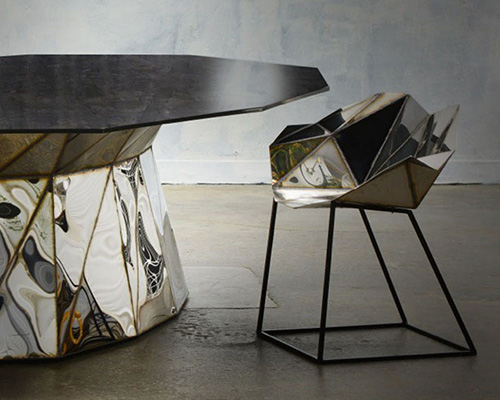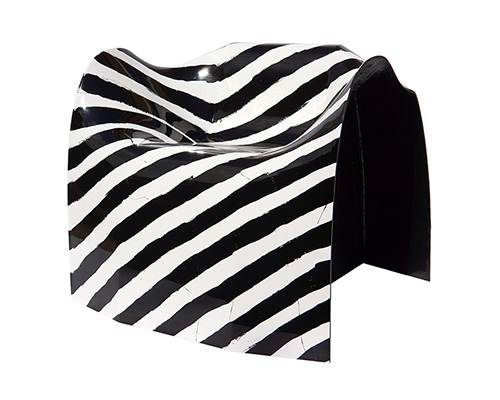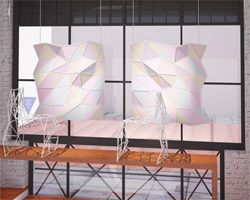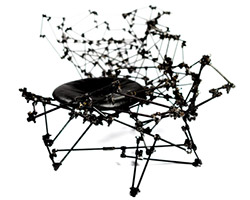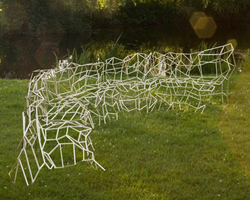top image: parallax, dining table, 2014
welded mirror finish stainless steel, fiberglass and carbon ribbons
photo by gilles pernet
julian mayor ‘organic geometry’
at galerie armel soyer
from february 6th – april 12th, 2014
british designer, julian mayor told us more about his new works on show at galerie armel soyer in paris which has just opened and will run until april this year.
designboom (DB): please can you tell us more about your new show ‘organic geometry’?
julian mayor (JM): organic geometry represents the two things that interest me most when designing; a geometrical aspect, coming largely from the computer and also an organic, natural quality coming from making something by hand. the show features mostly my recent work and a few older pieces. there are two large new pieces made specifically for armel soyer, the lunar table and the parallax table and chairs. working with armel soyer has been great, she really pushed me to try new things and to raise the standard of finish to the highest level.
DB: you design and produce all your work yourself, which part of the process do you enjoy most?
JM: I do enjoy all parts of the design process, working with it on screen is nice, you can experiment quickly and try many things, but developing a process and making things is satisfying in a different way. for the past two years I have been working with mirror polished stainless steel, which has a lightness because it reflects its surroundings but also a structural quality coming from the welds.
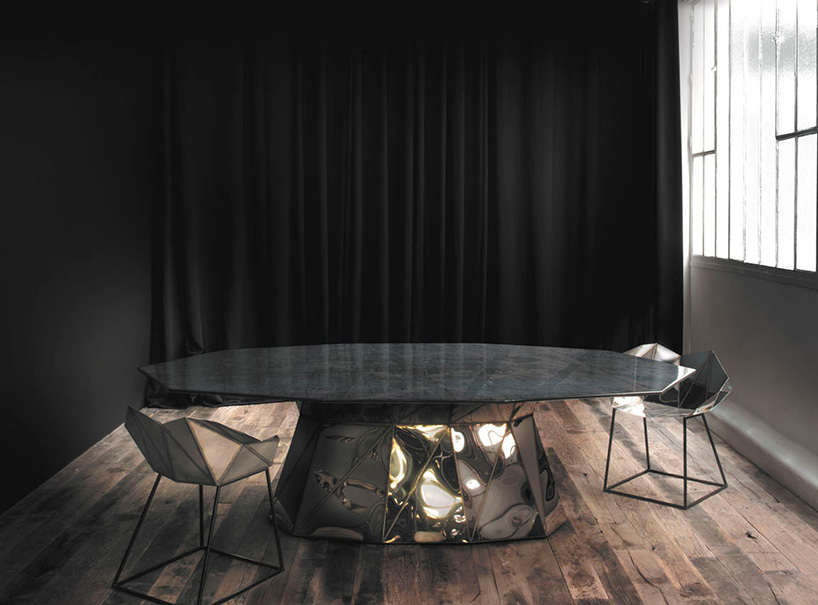
parallax, chair, 2014
welded mirror finish stainless steel
photo by gilles pernet
parallax is the apparent displacement, or difference of position, of an object, as seen from two different stations, or points of view. the term is derived from the greek παράλλαξις (parallaxis), meaning ‘alteration’. to me, carbon fibre has a darkness, it is associated with secretive cutting edge technology, such as formula 1 cars and fighter planes. but even though it is high tech, it is often made in quite a hand made way. I wanted to keep the dark and mysterious atmosphere that surrounds the material, but also to introduce an element of craft and emphasize the fact that it begins as a cloth, something like a fashion garment. to break up a monolithic surface and give it layers, detail and interest and to contrast its toughness with fragility.
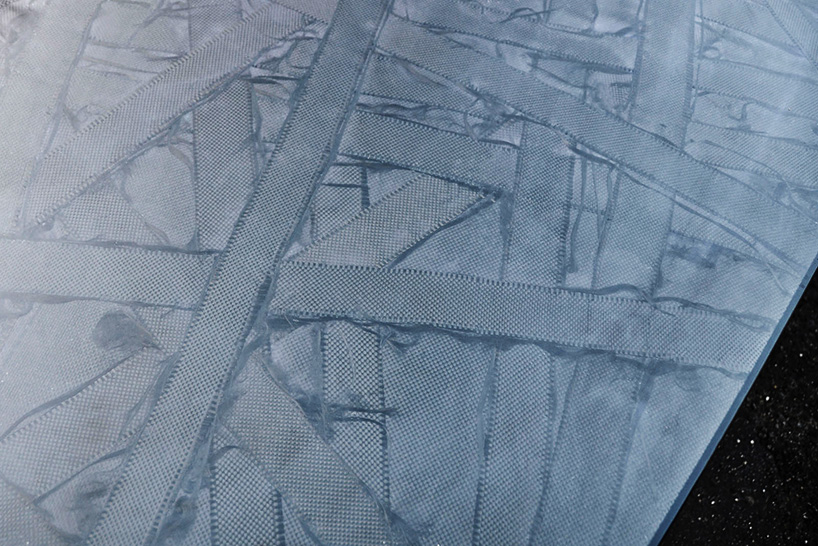
parallax, dining table (detail of the carbon fiber surface)
photo by gilles pernet
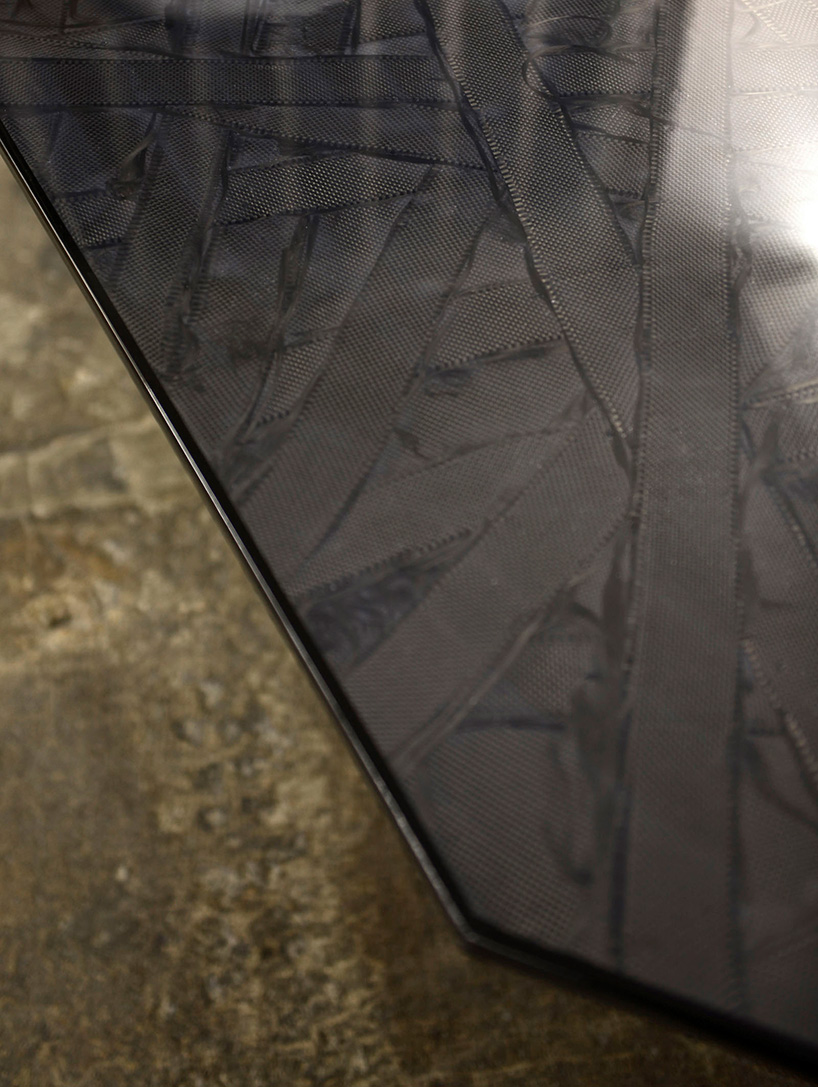
parallax, dining table (detail of the carbon fiber surface)
photo by gilles pernet
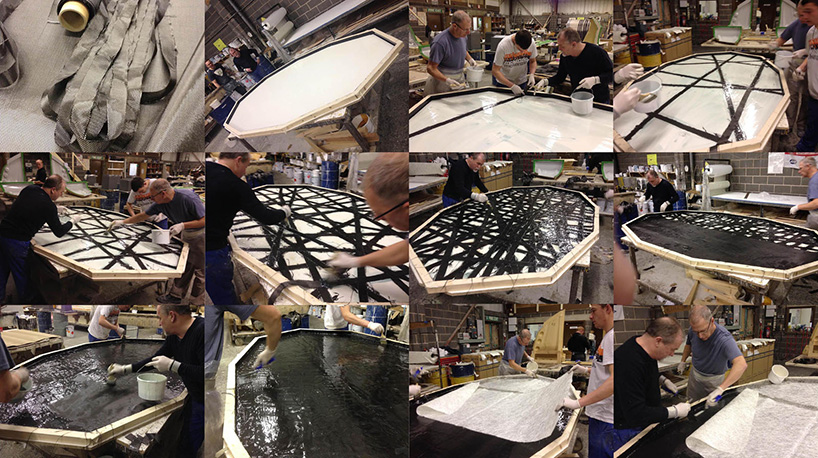
making of the parallax, dining table
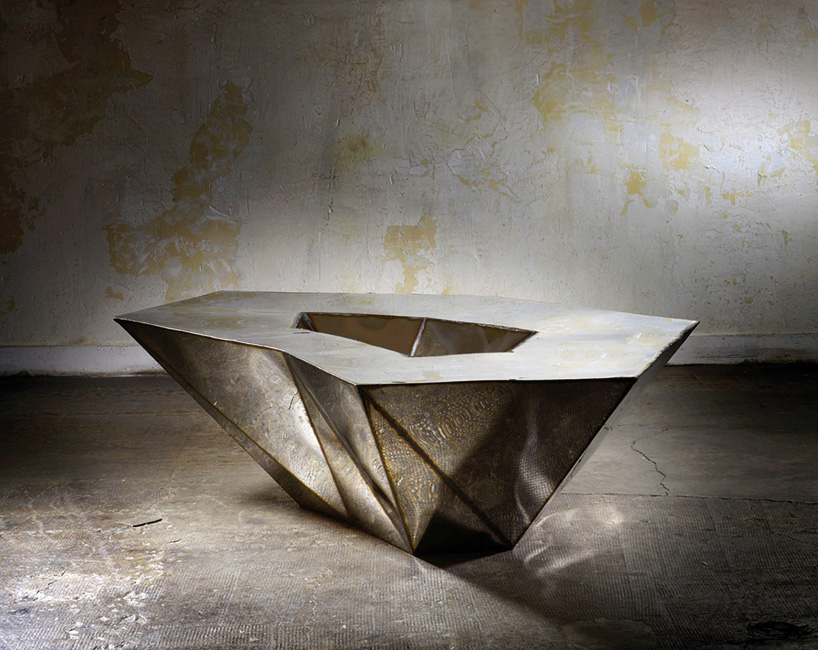
lunar, low table, 2014
welded mirror finish stainless steel
photo by gilles pernet
the form of the table looks like something like a lunar surface, with the shiny metal reminiscent of space technology. the table top is made from a single sheet of stainless steel, which will reflect the ambiance of any room where it is placed. the ‘crater’ in the center of the table creates a focal point, adding detail and interest to the top.
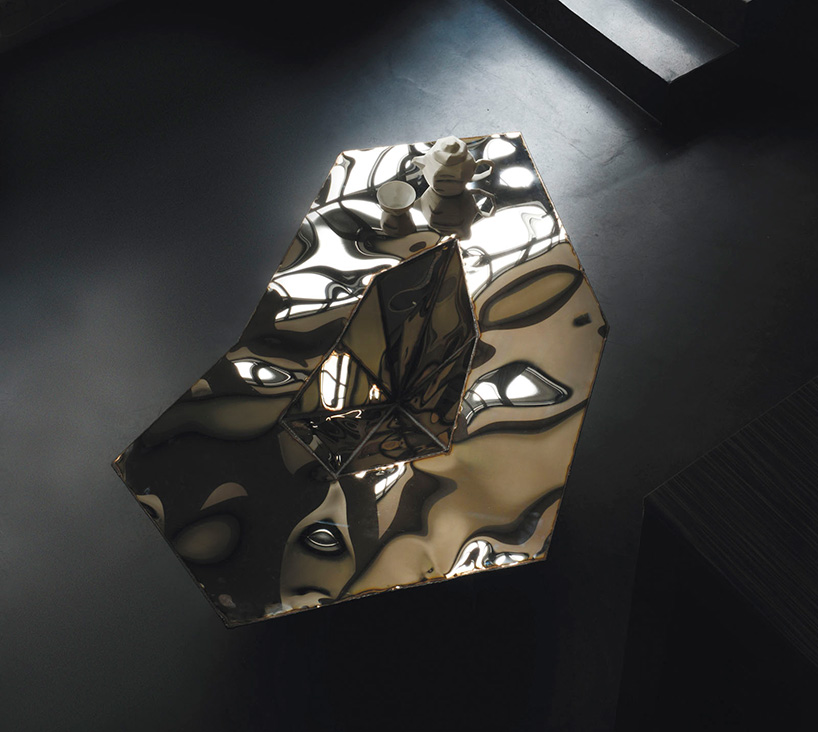
lunar, low table, 2014
welded mirror finish stainless steel
photo by gilles pernet
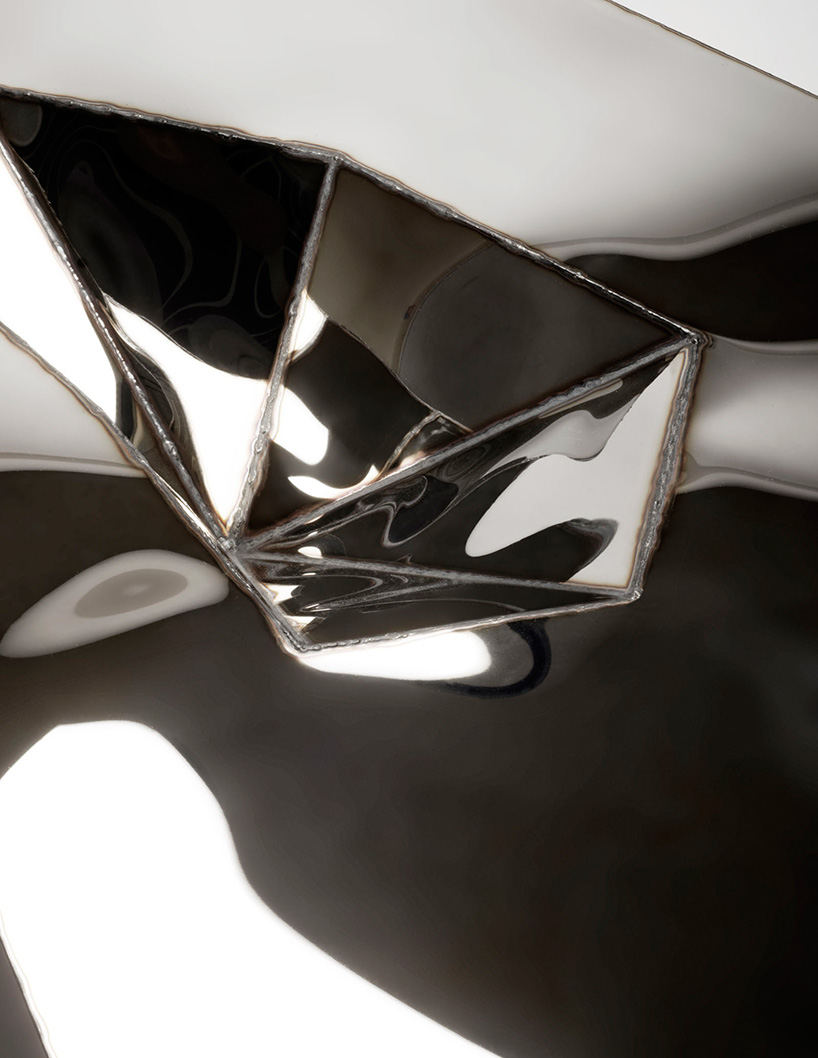
lunar, low table, (detail)
photo by gilles pernet
DB: can you describe an evolution in your work when you started out until now?
JM: from first sketch to final piece usually takes around two years, so I usually have three or four projects at various stages of completion. there is always the balance between experimentation with new techniques, which takes time, money and patience, and refining something that is popular to make it perfect. I have had my own studio for about fourteen years now and would like to think that throughout this time I’ve kept the balance fairly even, allowing my work to progress over time, but for it all to have a certain atmosphere and feel about it.
DB: do you have any favorite materials or production methods?
JM: at the moment, I really enjoy making the metal pieces. over the past four years, my skill with the torch has improved greatly and welding is a very satisfying thing to do.
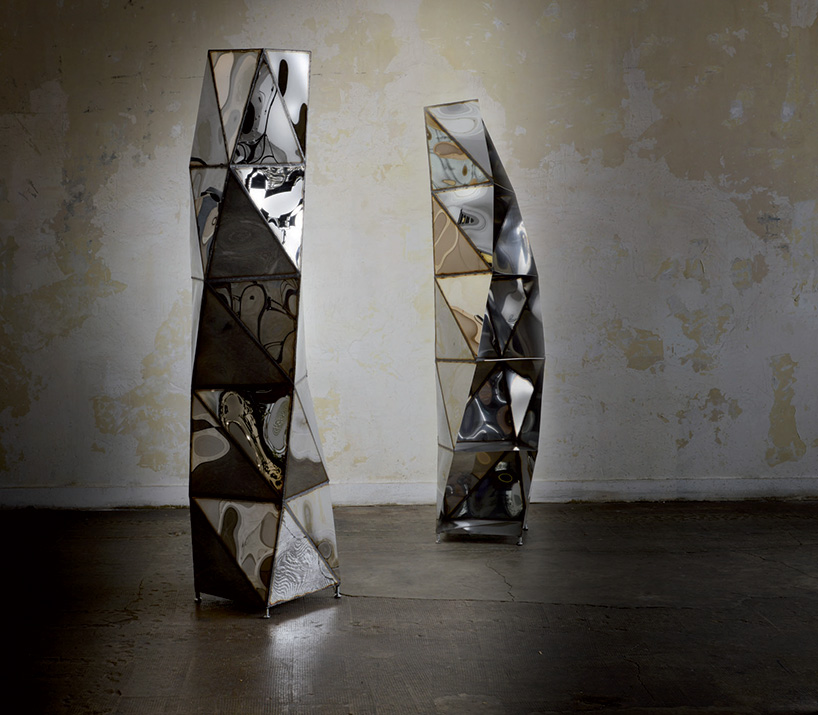
spiral, 5 shelves column, 2012
welded mirror finish stainless steel
photo by gilles pernet
a column twists as it reaches upwards. the bookshelf was developed on a computer and with scale models, but the physical making process (folding / welding) adds a layer of depth to the construction. the construction contains 5 shelves, each measuring around 40 x 40 x 35 cm, with usable space for objects or books of all sizes.
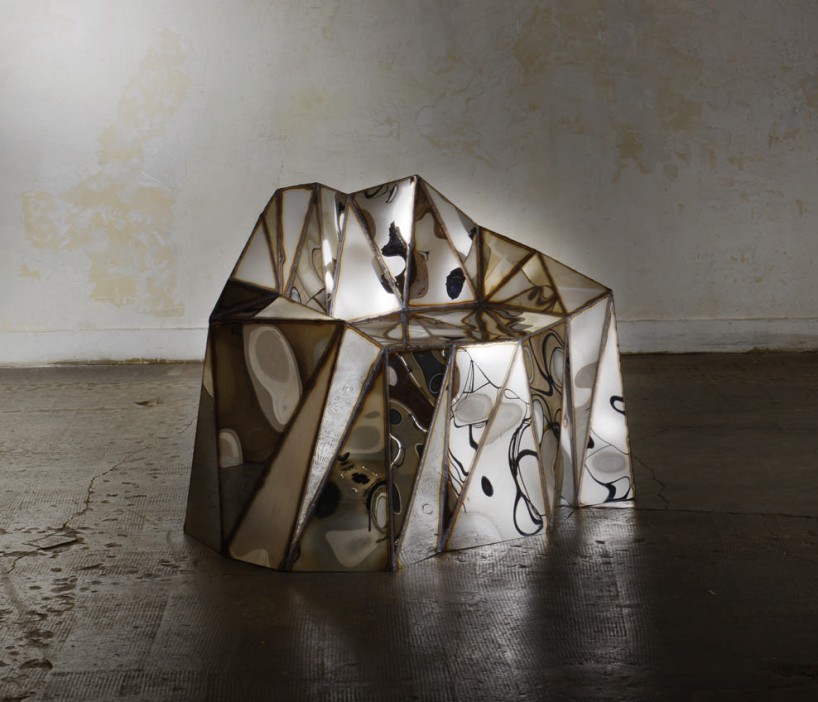
glenda, chair, 2013
welded mirror finish stainless steel
photo by gilles pernet
the glenda chair was initially developed on a computer and with scale models, but the physical making processes of folding and welding leave the chair with a tension between the highly controlled design stages and a more organic making process. the welding lines create a counterpoint to the mirrored structure and the heat distortion adds a level of depth and interest to the surfaces of the chair. although the chair is highly geometric in outline, the surfaces are slightly curved and reflect light in swirling pools.
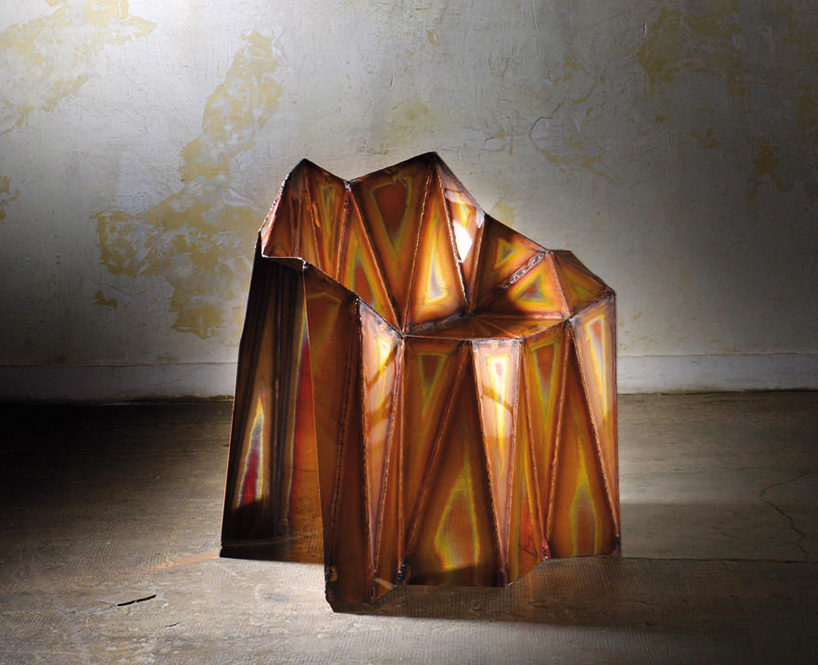
fernando, chair, 2013
welded mirror finish copper
photo by gilles pernet
the fernando chair was initially developed on a computer and with scale models, but the physical making processes of folding and welding leave the chair with a tension between the highly controlled design stages and a more organic making process. the welding lines create a counterpoint to the mirrored structure and the heat distortion adds a level of depth and interest to the surfaces of the chair. although the chair is highly geometric in outline, the surfaces are slightly curved and reflect light in swirling pools.
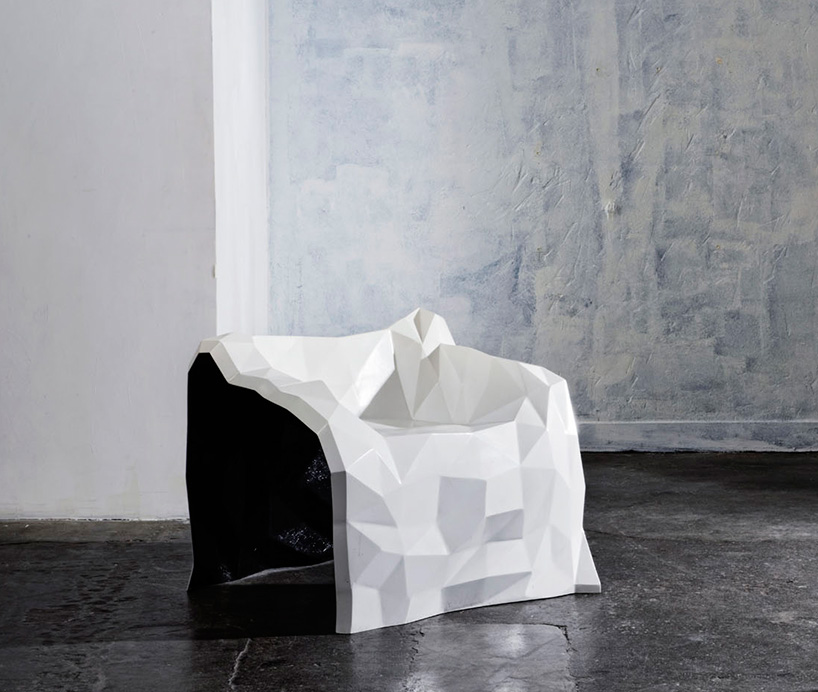
general dynamic, chair, 2004
fiberglass
photo by gilles pernet
with this chair I wanted to represent computers as what i see as a work in progress, still pretty early on in their evolutionary life cycle and so still open to experimentation and risk. the chair was created to look like a three dimensional sketch, with the idea of technology as having a character of its own. like a computer visualisation, the form gives clues, but it needs the viewers imagination to complete the surfaces.
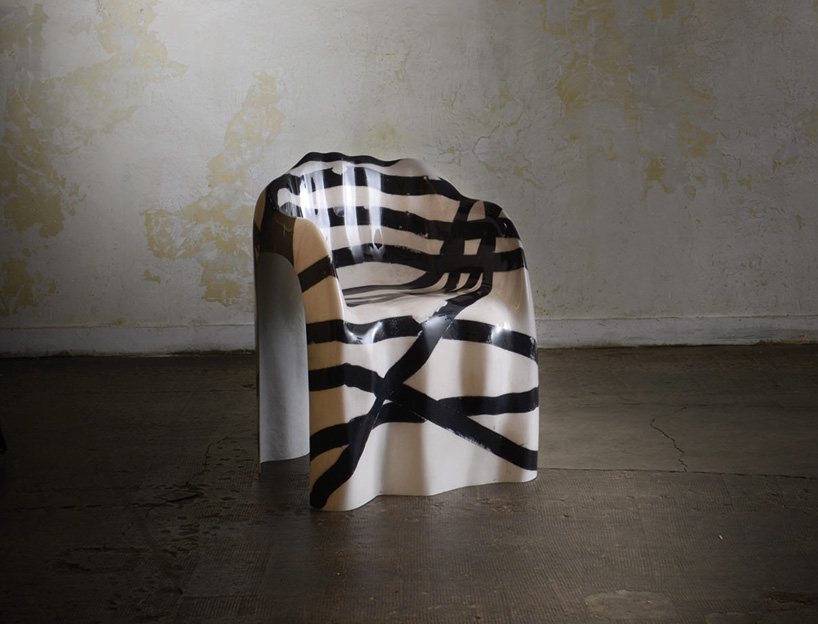
strata, chair, 2010
fiberglass and carbon ribbons
photo by gilles pernet
strata takes its inspiration from landscapes and mountain peaks, along with the software modelling of moving effects such as erosion and wind. I’m interested in how a computer understands and reproduces a natural phenomenon, and the differences and similarities between a machine and a human perception of the world.
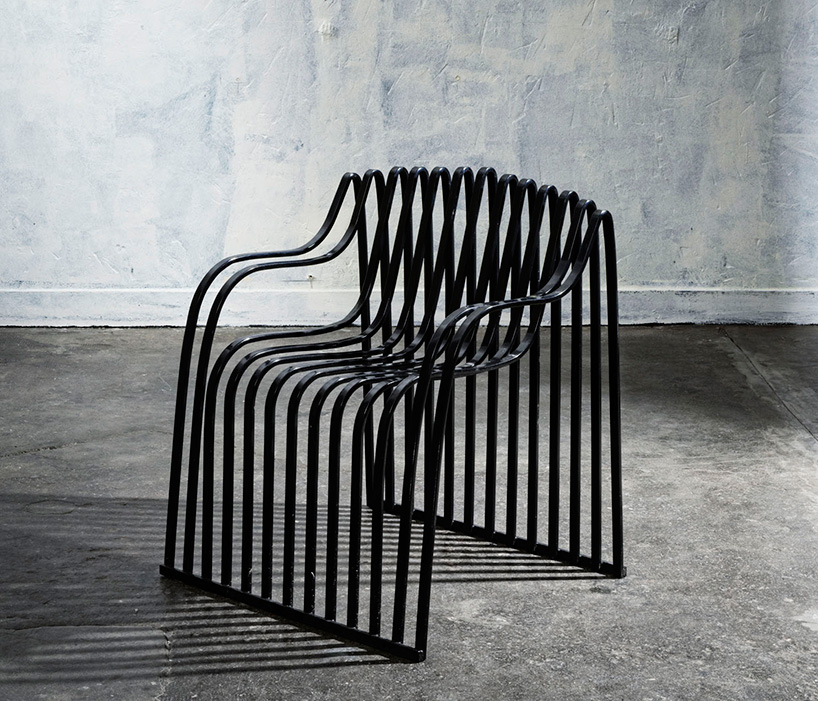
contour, garden chair, 2013
steel
photo by gilles pernet
sculpture at goodwood commissioned a series of designs to provide permanent seating with which to view the changing sculptural presentations in the park. the chair design reflects the undulating nature of the site as a series of contoured steel bands that ensure stability and strength yet give a delicate and lightweight appearance. the contour chair is currently installed throughout the sculpture park.
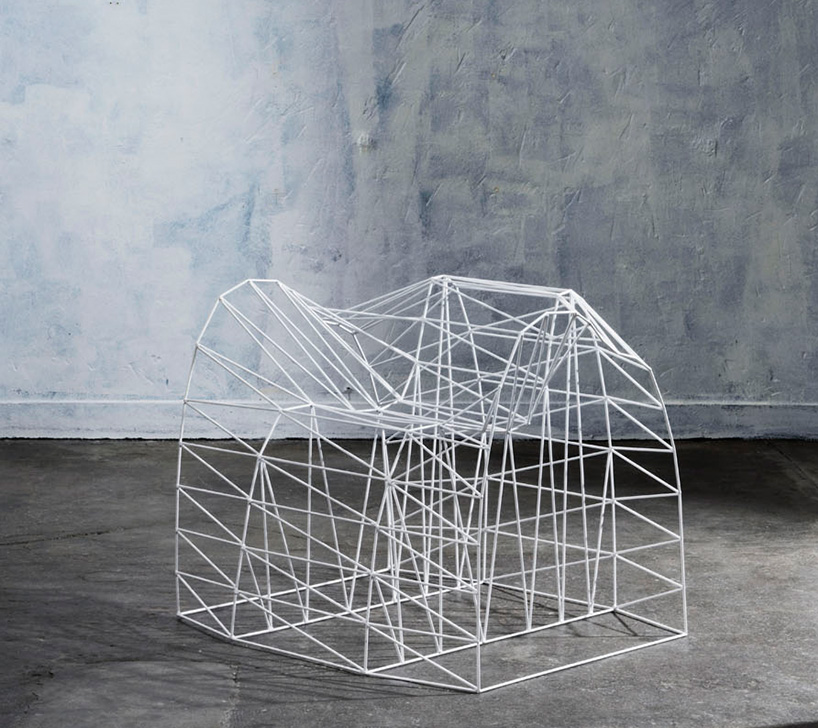
organic loop chair, 2013
welded steel
photo by gilles pernet
‘the organic loop chair’ is conceived as four loops with three ‘surfaces’ represented in the steel wire. the chair explores how forms are perceived and how the eye takes in partial information and translates these clues into a solid object in the mind – the angular form at times seeming curved.
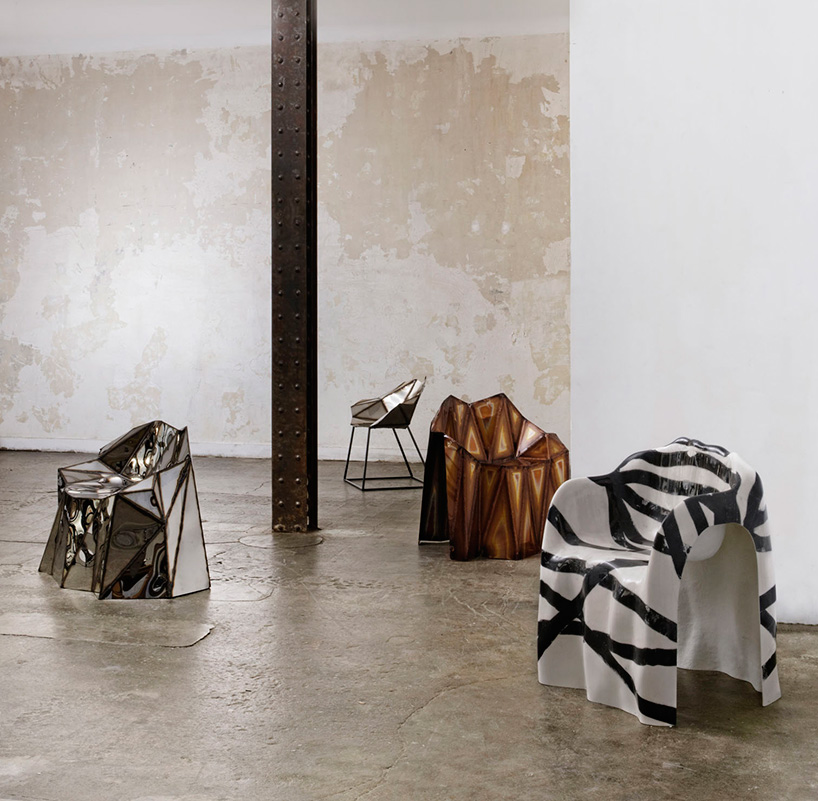
view of the exhibition at galerie armel soyer
photo by gilles pernet
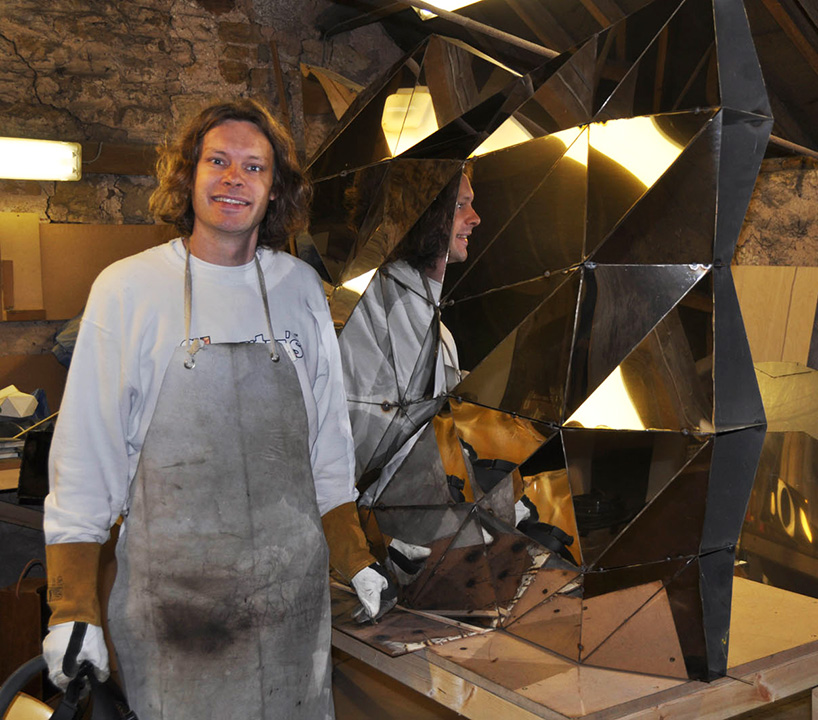
julian mayor photographed by gilles pernet
DB: is there a material or technique you would like to explore further?
JM: making the parallax table top from carbon fiber was exciting, it is a difficult and expensive material to work with, but I feel that it has a lot of potential for new things to be done with it, so perhaps that’s something I’ll work with more in the future.
DB: what themes are you hoping to explore in your next projects?
JM: on the computer side of things, I’m always sketching new ideas with a material or process in mind. I always try to keep the themes of ‘visually dynamic’ and ‘the computer’ on one hand, and lightness and craft on the other. I especially like an object to look interesting from a distance, but for it to then reveal more details on closer inspection.
julian mayor (17)
PRODUCT LIBRARY
a diverse digital database that acts as a valuable guide in gaining insight and information about a product directly from the manufacturer, and serves as a rich reference point in developing a project or scheme.
